forum
library
tutorial
contact

Lower Granite Water Temps Go Above 68 Degrees;
Returning Snake River Sockeye Stalling Through System
by Staff
Columbia Basin Bulletin, July 10, 2014
|
the film forum library tutorial contact |

|
Lower Granite Water Temps Go Above 68 Degrees;
by Staff
|
 Salmon and river managers of the regional Technical Management Team briefly lost their battle to keep Snake River temperatures in the Lower Granite Dam tailrace below 68 degrees Fahrenheit this week as low water, higher river temperatures from upstream and warmer than normal weather continues to plague the Northwest.
Salmon and river managers of the regional Technical Management Team briefly lost their battle to keep Snake River temperatures in the Lower Granite Dam tailrace below 68 degrees Fahrenheit this week as low water, higher river temperatures from upstream and warmer than normal weather continues to plague the Northwest.
The 68 degree threshold was set by a NOAA Fisheries biological opinion to help maintain cooler water temperatures in the lower Snake River during the adult chinook salmon and sockeye salmon migrations. Sockeye are listed as endangered under the U.S. Endangered Species Act.
However, according to fisheries managers, the higher temperatures in the Snake River are very likely the cause for the slow sockeye migration.
Usually the conversion rate for returning Snake River sockeye from Bonneville Dam through Lower Granite Dam is 70 percent to 80 percent, according to Pete Hassemer of the Idaho Department of Fish and Game.
"Now it's just 54 percent from Bonneville to McNary," he said at the two state Columbia River Compact meeting Tuesday.
A conversion rate, in this case, is the percentage of adult fish detected at Bonneville Dam that complete their journey up to the South Fork Salmon-McCall Hatchery.
"We don't usually see these conditions and the run is usually earlier, but we've seen about half (the number of sockeye salmon) of what we've seen in the past," he said.
Dave Statler of the Nez Perce Tribe said at this week's TMT meeting that the "fish are stalling and slowing down throughout the system."
Based on PIT-tag projections, he said, more Snake River sockeye salmon have migrated upstream of Bonneville Dam this year, but that the conversion rates are some of the lowest ever.
Some 2,871 Snake River sockeye have passed the dam and more are expected, according to Statler.
(The final tally of the endangered fish last year was 2,773 fish at Bonneville Dam. Some 1,434 of those fish returned to central Idaho's Sawtooth Valley.)
The temperature in the dam's tailwater rose above 68 degrees for the first time this year at 4 p.m., July 6, when it went to 68.04 degrees. It continued to rise to 69.77 degrees at 6 p.m., July 8, but is expected to fall due to increased flows from Dworshak Dam on the North Fork of the Clearwater River, a tributary of the Snake River.
As of 11 a.m. Thursday, July 9, the instantaneous temperature had reached 70.41 degrees and the 12-hour average temperature was at 69.53 degrees.
Water released from Dworshak Dam is about 42 degrees. The dam provides a boost of cool water for projects in the lower Snake River and is the only tool river managers have left to cool water in that section of the river.
"The models suggested we could squeak by over the July 4 weekend by doing what we were doing (at Dworshak Dam), but the temperature rose rapidly and is now over 69.5," said Steve Hall of the U.S. Army Corps of Engineers Walla Walla District on Wednesday.
The Corps had set flows from Dworshak Dam at 5,300 cubic feet per second over the weekend. Based upon weather projections and the modeled results, the Dworshak flow should have kept tailwater temperatures at Lower Granite Dam below the 68 degree threshold, Hall said.
One of the issues, he said, is that the skies had been absolutely cloudless over the weekend and solar radiation that the model had not accounted for resulted in warmer than expected water temperatures.
When the temperature rose above 68 degrees, the Corps immediately boosted flows from Dworshak Dam to 7.5 kcfs. However, the water takes 72 hours before it arrives at Lower Granite Dam. With the arrival of the cold water and weather forecasts with moderate temperatures the next few days, the Corps expects the tailwater temperature to drop below 68 degrees by Friday.
Hall said the Corps is attempting to keep the water cool enough at Lower Granite so as not to exceed the BiOp, but also to preserve as much of Dworshak's cold water as possible for later in the summer.
Related Pages:
Hot Weather Forces Dworshak Flow Increase to Cool Lower Snake; Snake River Sockeye Passing Bonneville by CBB, June 26, 2015
NOAA Fisheries Releases Snake River Sockeye Salmon Recovery Plan:25 Years Of Actions At $101 Million by CBB, June 12, 2015
Snake River Sockeye Show Highest Returns To Sawtooth Valley Since 1950s by CBB, Sept. 19, 2014
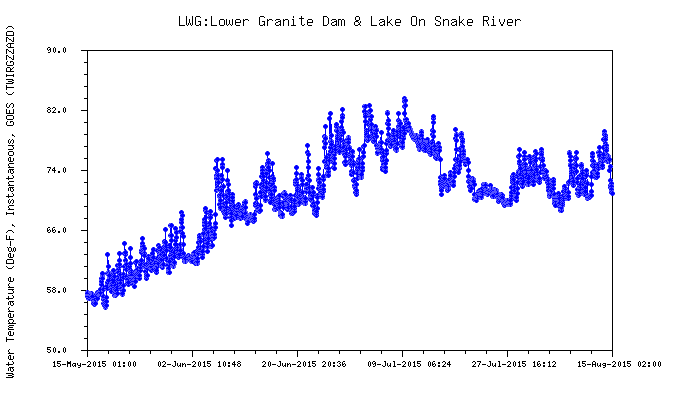
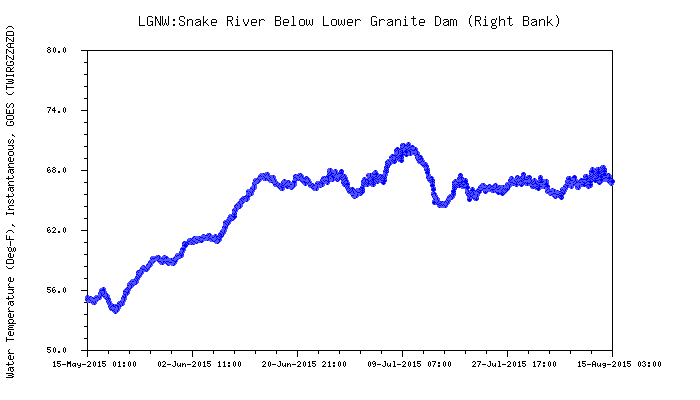
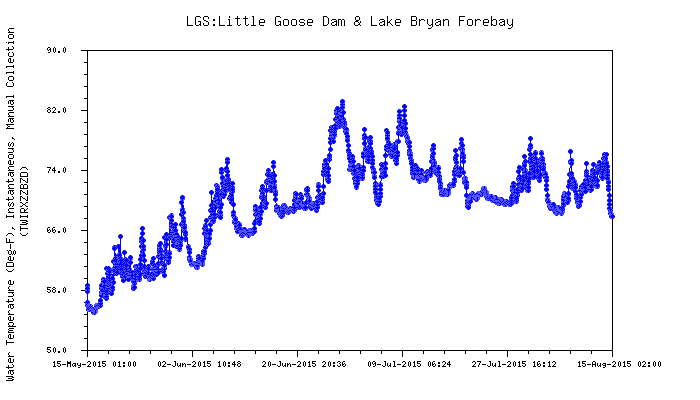
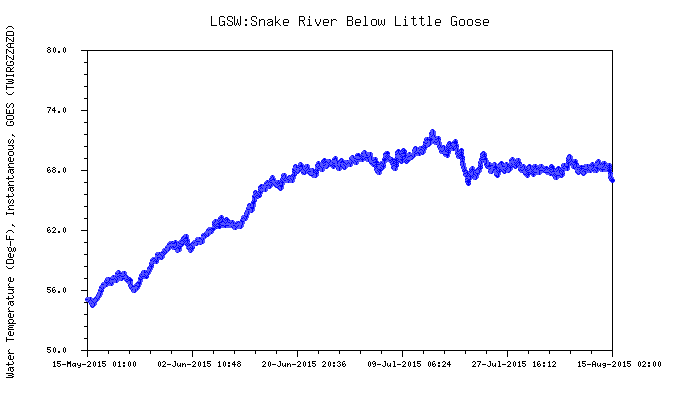
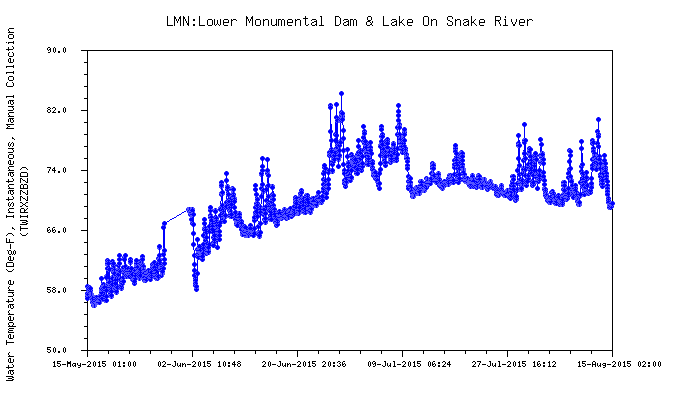
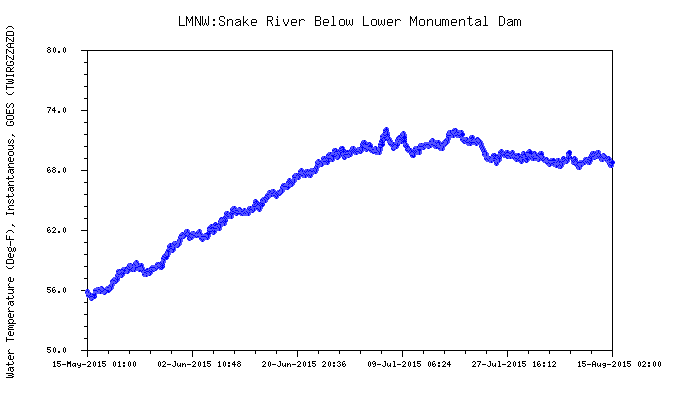
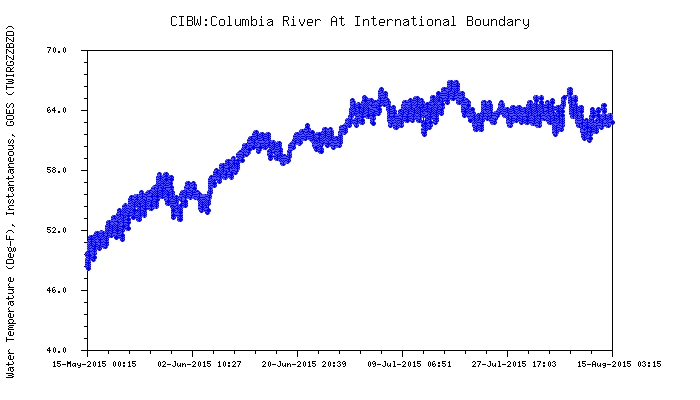
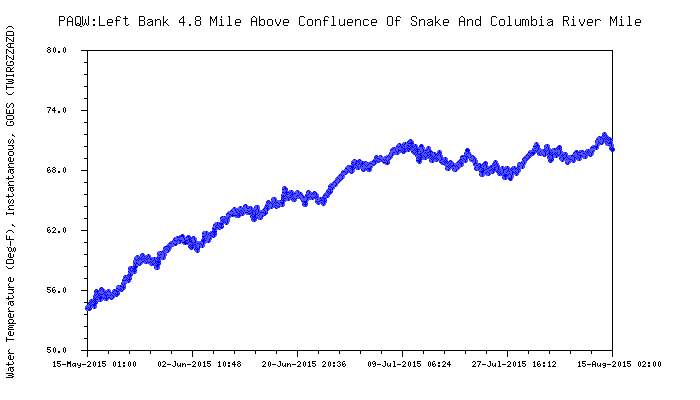
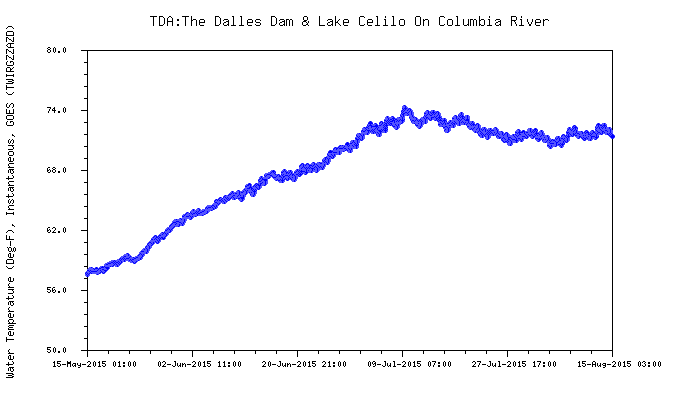

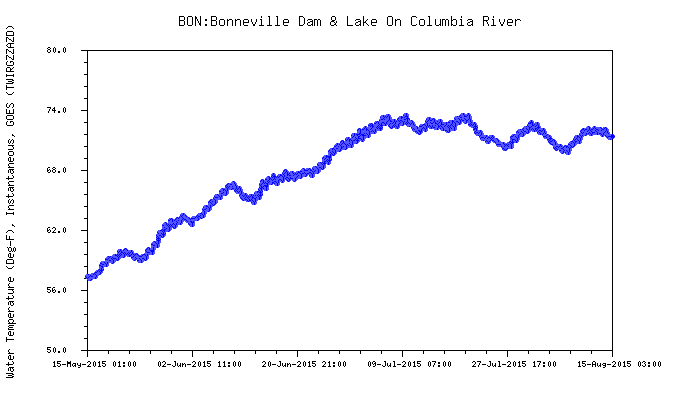
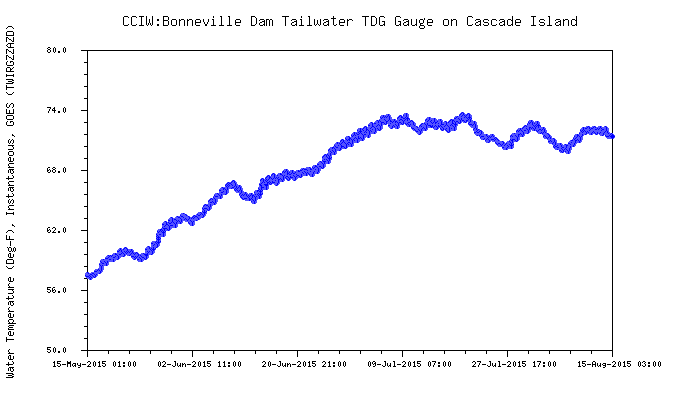
learn more on topics covered in the film
see the video
read the script
learn the songs
discussion forum
